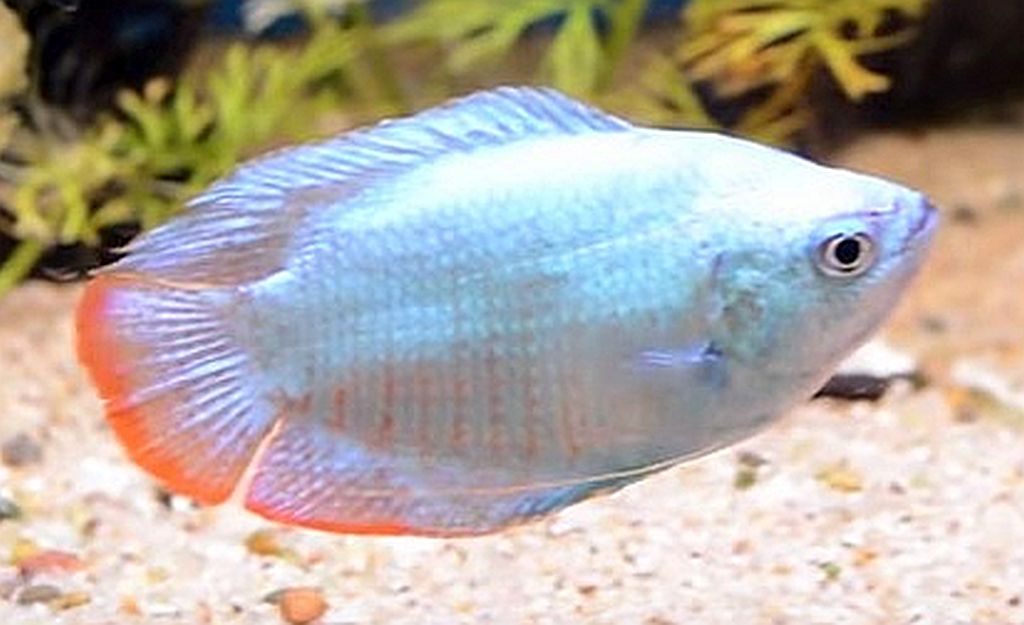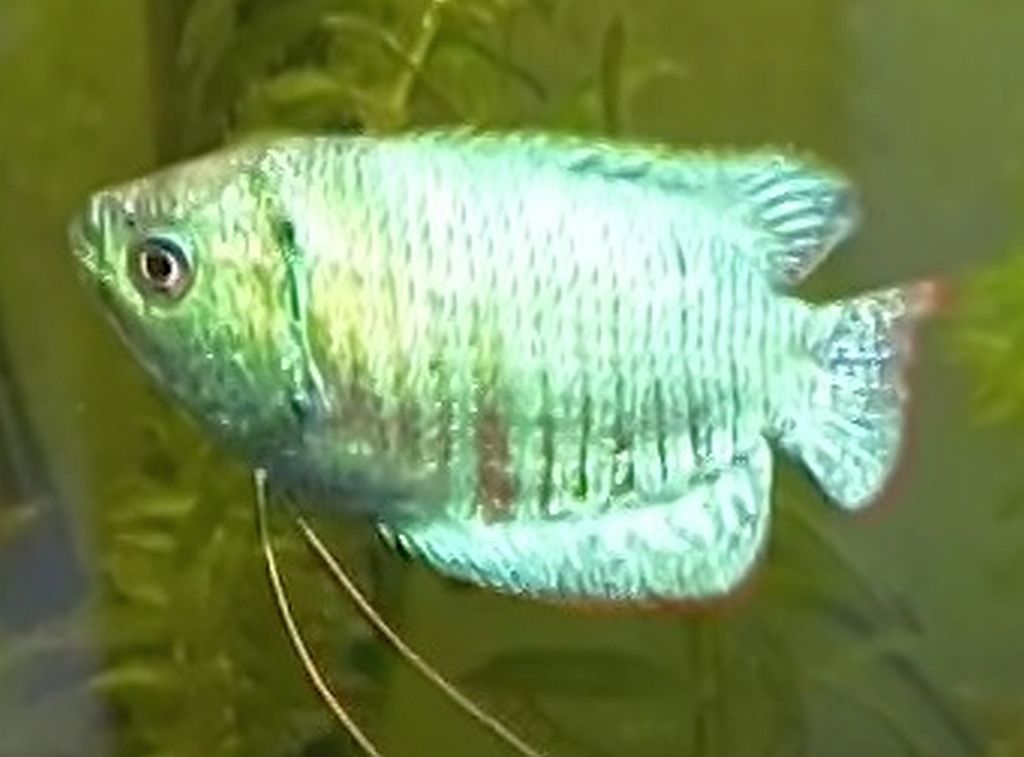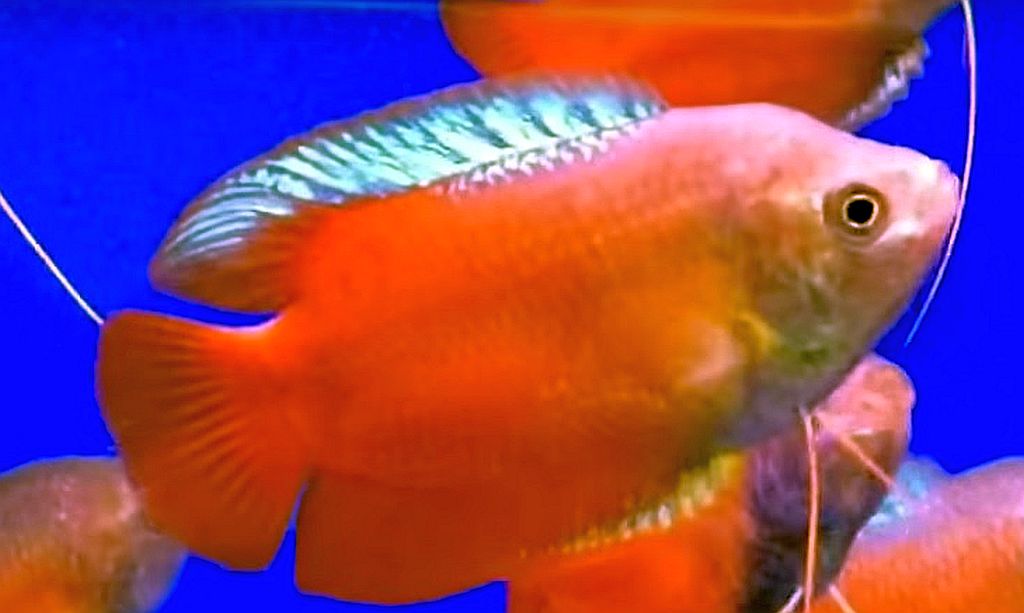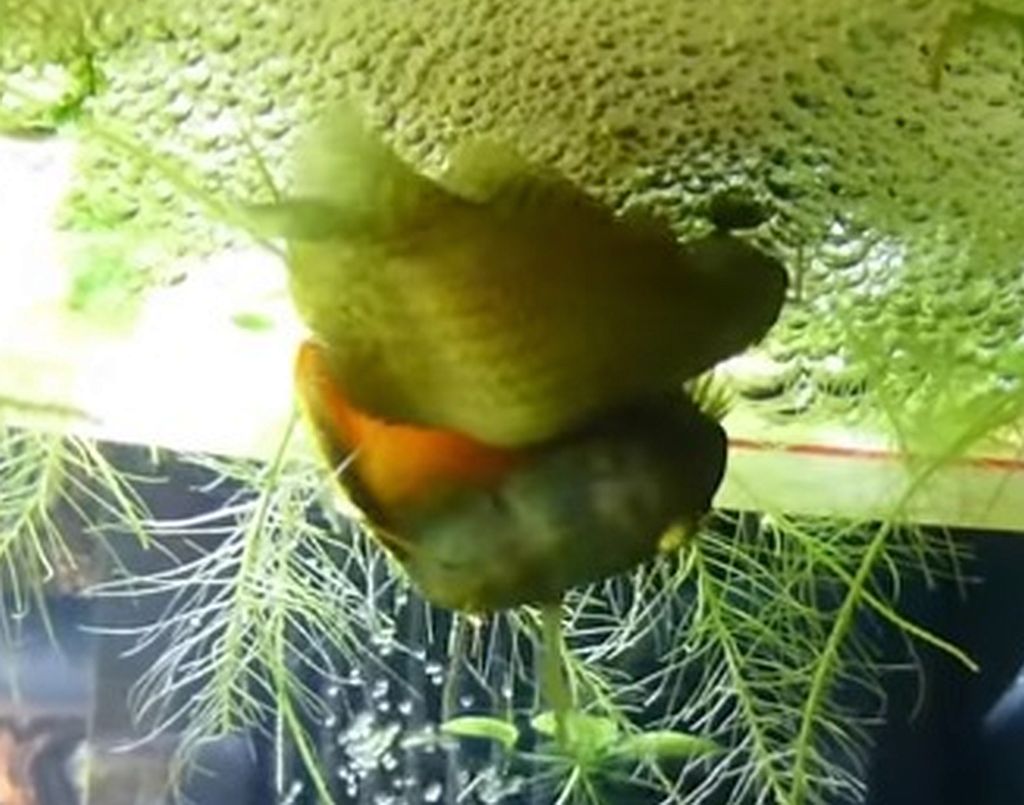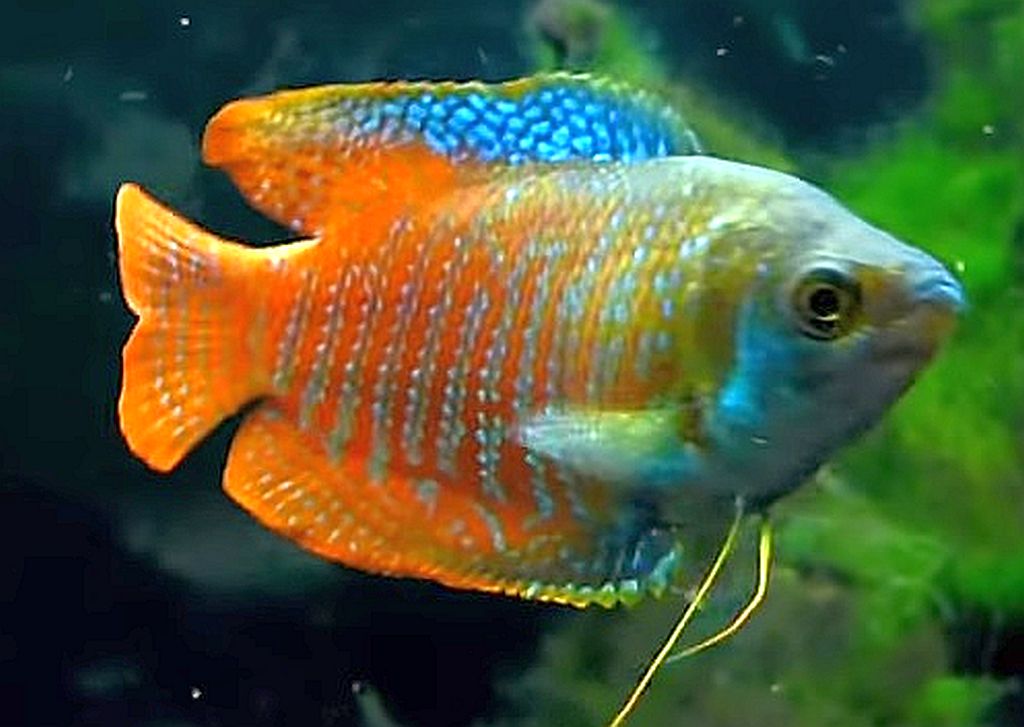Dwarf Gourami (Colisa lalia) are widely distributed throughout Pakistan, northern India, West Bengal, Assam, and Bangladesh. They are usually found in thickly vegetated areas together with other Colisa species in swamps, ditches, ponds, irrigation canals, streams, and other sluggish moving waters.
Dwarf Gourami have been hybridized into several color variations known to tropical fish keeping enthusiasts as Flame Gourami, Powder Blue Gourami, Blue Gourami, Neon Gourami, Rainbow Gourami, Red Gourami, Sunset Gourami, Red/Blushing Gourami, etc.
Powder Blue Gourami are predominately blue with little to no red showing on the body.
Neon Gourami have a much brighter blue pattern than the standard variety.
Sunset Gourami have a brilliantly colored red orange body color with an almost metallic blue dorsal fin. They are similar to Flame Gourami and also called Red Gourami.
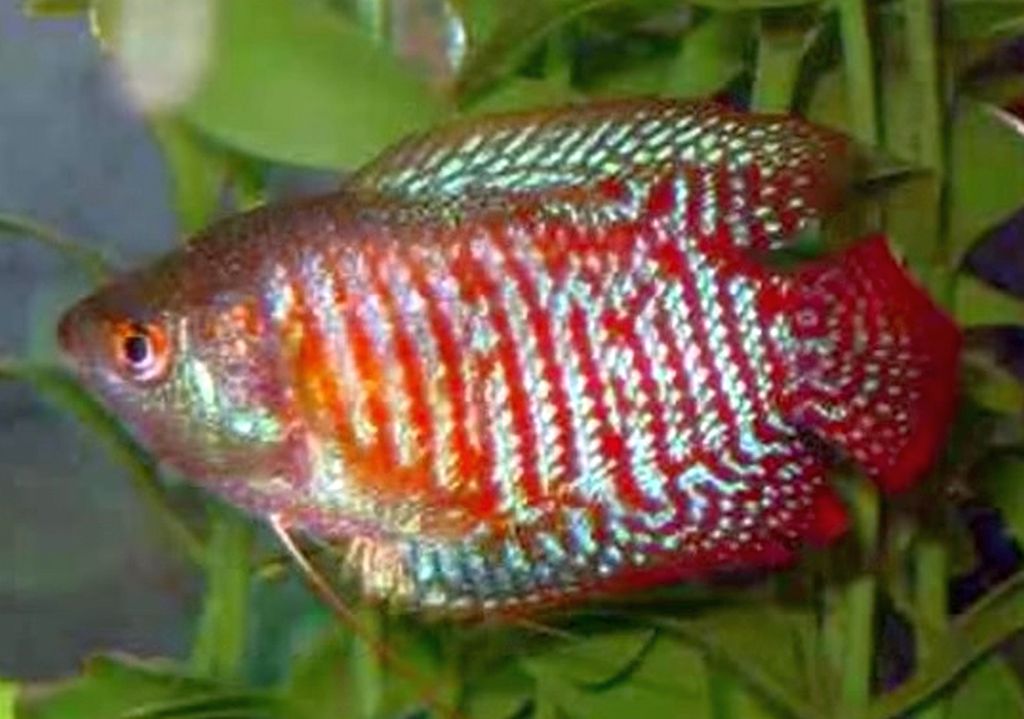 Rainbow Gourami have devastatingly brilliant orange-red bodies with blue stripes and a metallic green-gold sheen.
Rainbow Gourami have devastatingly brilliant orange-red bodies with blue stripes and a metallic green-gold sheen.
Although feral populations exist in Singapore, Colombia, and the southern United States; almost all the fish that are now purchased from tropical fish shops have been mass-bred for the aquarium trade. Wild specimens are seldom if ever available for purchase.
Dwarf Gourami are aptly named. They only grow to a maximum length of about 2″ with males being slightly larger than females.
Males have pointed dorsal and anal fins and a bright orange-red body color with turquoise blue vertical stripes that extend into the fins.
Females have more rounded dorsal fins and are a duller silvery blue gray color that is never as brilliant as those of the males. The females never achieve the brilliant colors of the males.
Like all gourami, Dwarf Gourami have a labyrinth organ that allows them to breathe atmospheric air to survive in stagnant waters with low oxygen content. In an aquarium environment, they should always have access to the surface of the aquarium to take a gulp of air when needed.
Because of their peaceful nature and diminutive size, Dwarf Gourami are perfect for smaller community aquariums. They should not be kept with very large or aggressive fish, or very brightly colored fish that can be perceived as a rival to males.
Like most Anabantoids, Dwarf Gourami prefer an aquarium with slow moving water. They do best in a densely planted aquarium of at least 15 gallon capacity with plenty of shade and hiding places. A dark sandy or fine gravel substrate with floating plants is also recommended to keep these shy fish calm. Some driftwood
, twigs, branches, and leaf litter can be added to provide a more natural looking, biotope setup.
Modern tank bred Dwarf Gourami are fairly adaptable and will thrive in most well maintained aquariums provided there are sufficient hiding places and shady areas for the females to escape male harassment. They are usually sold together in sexed pairs and it is not a god idea to keep two males or a group of Dwarf Gourami together in the same tank, regardless of size.
Dwarf Gourami are a bubble nesting species that is not difficult to breed. Place a conditioned breeding pair into a separate breeding tank with plenty of floating plants like Riccia and/or several good sized clumps of hornwort or other fine leaved plants along with a small air driven corner sponge filter. A diet containing plenty of live and frozen foods will quickly get the pair into inbreeding condition.
Most breeders drop the water level in the breeding tank to about 6″ and raise the water temperature to around 80 to 84°F. A tight fitting cover is essential to keep the humidity and air temperature in the tank constant for the proper development of the labyrinth organ in the fry. Many breeders also add dried Indian Almond Leaves to the breeding tank to prevent diseases in the eggs, the fry, and the adults.
When the female is ripe with eggs, place her into the spawning tank for a few days before adding the male, and then add the male during the evening to minimize any aggression.
The male will immediately begin to construct a bubble nest strengthened with plant material at the waters surface. During the nest building, the male will attack the female if he spots her in the area, which is why the addition of a lot of plants is essential.
When the nest is finished, the behaviour between the fish changes and the male stops being aggressive towards the female. When ready to spawn, the female will nudge the male underneath the nest with her feelers and snout until spawning occurs.
The male will wrap himself around the female as the eggs and sperm are simultaneously released. As the pair uncouples, the female will drift to the bottom of the tank and most of the buoyant eggs will float upwards and come to rest within the nest. The male will quickly collect any eggs that are outside the nest and place them there manually. The process is repeated several times until spawning is completed and the female is spent of eggs. An individual spawn can number up to 800 eggs.
When spawning is completed, remove the female from the breeding tank to prevent her from being injured by the male. The male will guard the nest and tend to the brood. Depending on the water temperature, the eggs will usually hatch within 36 hours and the tiny fry become free swimming within a few days.
The males are generally good parents and can be left to tend to the fry for a few days until the egg sacs are absorbed. Once the fry are free swimming, the male can be removed from the breeding tank.
The tiny fry require infusoria for a couple of weeks until they are large enough to feed on freshly hatched baby brine shrimp or . Because bullying occurs as the fry grow, most successful breeders set up at least two rearing tanks to minimize losses. As the fry grow, separate the smaller fry to a separate tank.
Dwarf Gourami are omnivorous in nature. They feed on small invertebrates, algae, and other aufwuchs. In an aquarium environment, they will eagerly accept most foods offered to them. A good quality dried food as the staple diet should be supplemented with regular meals of small live, frozen, or freeze dried bloodworm, brine shrimp, tubifex, mosquito larvae, etc.
All varieties of Dwarf Gourami are available for purchase at sizes from 1-1/4″ to 2″ in length.
Minimum Tank Size: 10 gallons
Care Level: Easy
Temperament: Peaceful
Aquarium Hardiness: Very Hardy
Water Conditions: 72-82° F, 4-10 dGH, pH 6.0-7.5
Max Size: 2″
Color Form: Blue, Clear, Orange, Red
Diet: Omnivore
Compatibility: suitable for community tanks
Origin: Ganges, Jumna, Bramaputra
Family: Belontiidae
Lifespan: 4-8 years
Aquarist Experience Level: Intermediate

